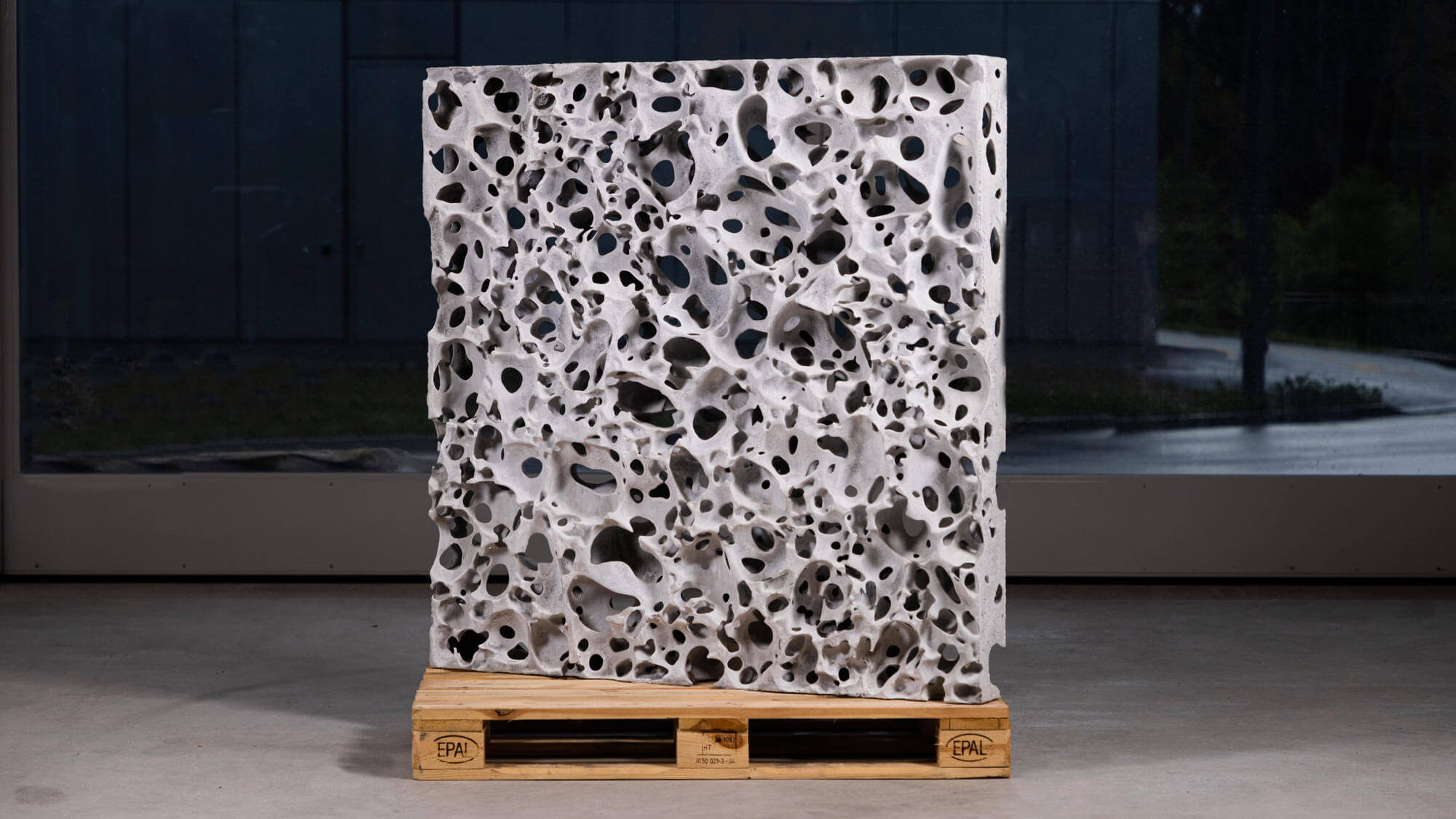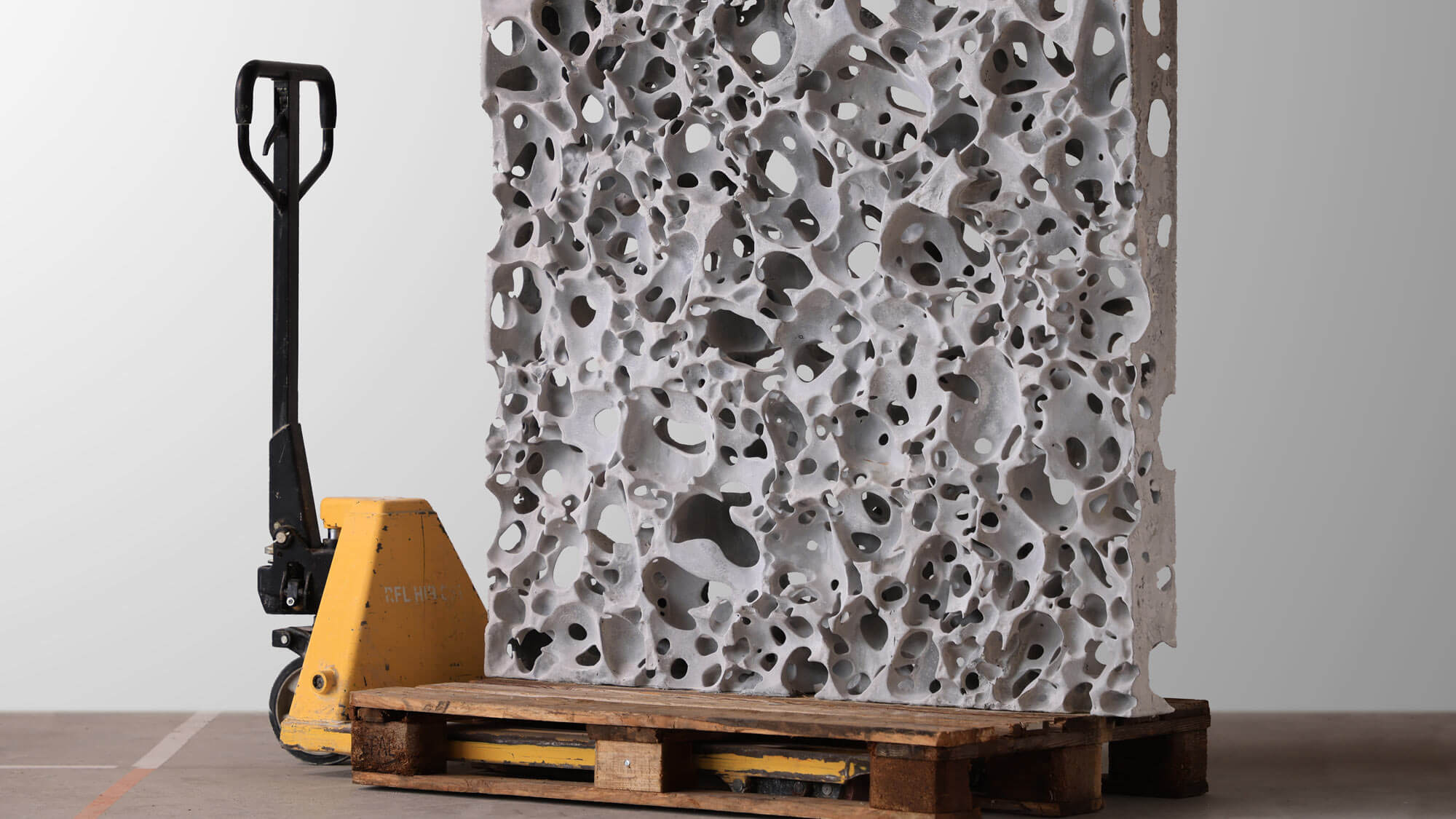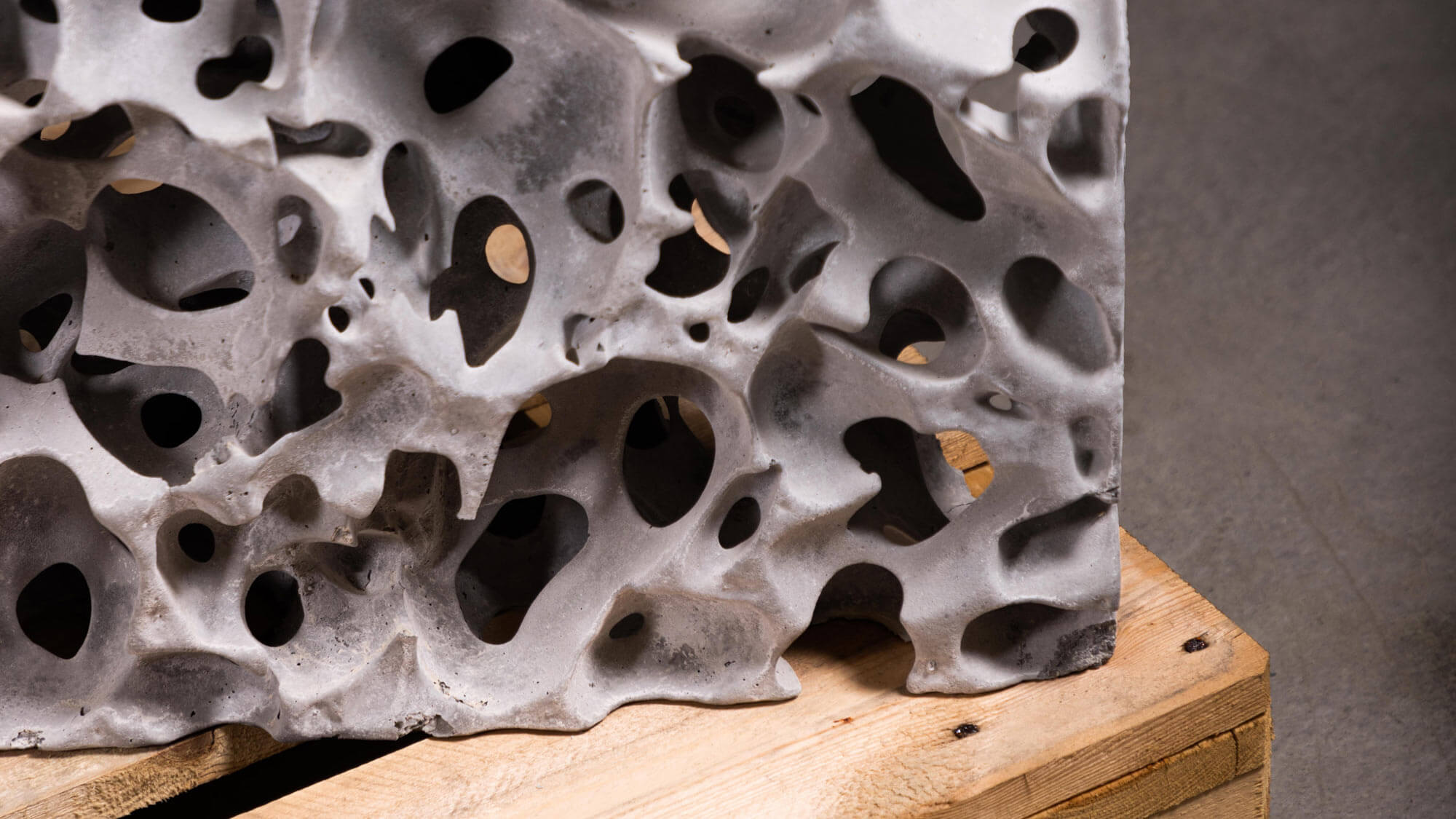Nomination
The Urban Biotope project operates on the borderline between human and non-human habitats. The 15 cm thick concrete screens for the building envelope create an interconnected cellular space for various biological species, surrounding the building with a self-sufficient ecosystem. Carefully sized cavities provide a favorable environment for various species of plants, insects, and nesting birds.
Due to its deep spacial structure, The Urban Biotope also functions as a sound absorber to effectively diffuse urban noise. The large surface area of the structure facilitates efficient thermal regulation of the building envelope. The fabrication of the screen uses ice waste from the urban infrastructure, purposefully reusing the energy of enthalpy. Ice is used to form a functional porosity in concrete, and melts away once concrete has set. The relative volume density of the structure is less than 1/3 of regular concrete due to the large volume of cavities, which allows for a minimal carbon footprint.
Credits
Technical assistance: Francesco Niederhauser, Tobias Hartmann, Sahra Khan, Sara Graf, Elena Kitani, Ming-Yang Wang, Girts Apskalns
With support from: Benjamin Dillenburger, ETH Zurich, HOLCIM Switzerland, Swiss Nasional Scientific Foundation (SNSF)
Biographies
Vasily Sitnikov (RU) is a postdoc at the Chair of Digital Building Technologies, ETH Zurich. Vasily earned his a doctoral degree in Architectural Technologies from KTH School of Architecture (Stockholm 2020), focusing on the use of ordinary ice as a sustainable alternative for concrete formwork. Before his doctoral studies, Vasily received a degree in Master of Arts in Architecture from Staedelschulle (Frankfurt am Main, 2014) and worked as an architect at the Studio Tomas Saraceno.
Vasily’s research explored an alternative production ecology in architecture using ice as the molding material—Ice Formwork. His research work and cross-disciplinary expertise encompass computational design, material-intelligent production methods, biodiversity, and marine biology.






